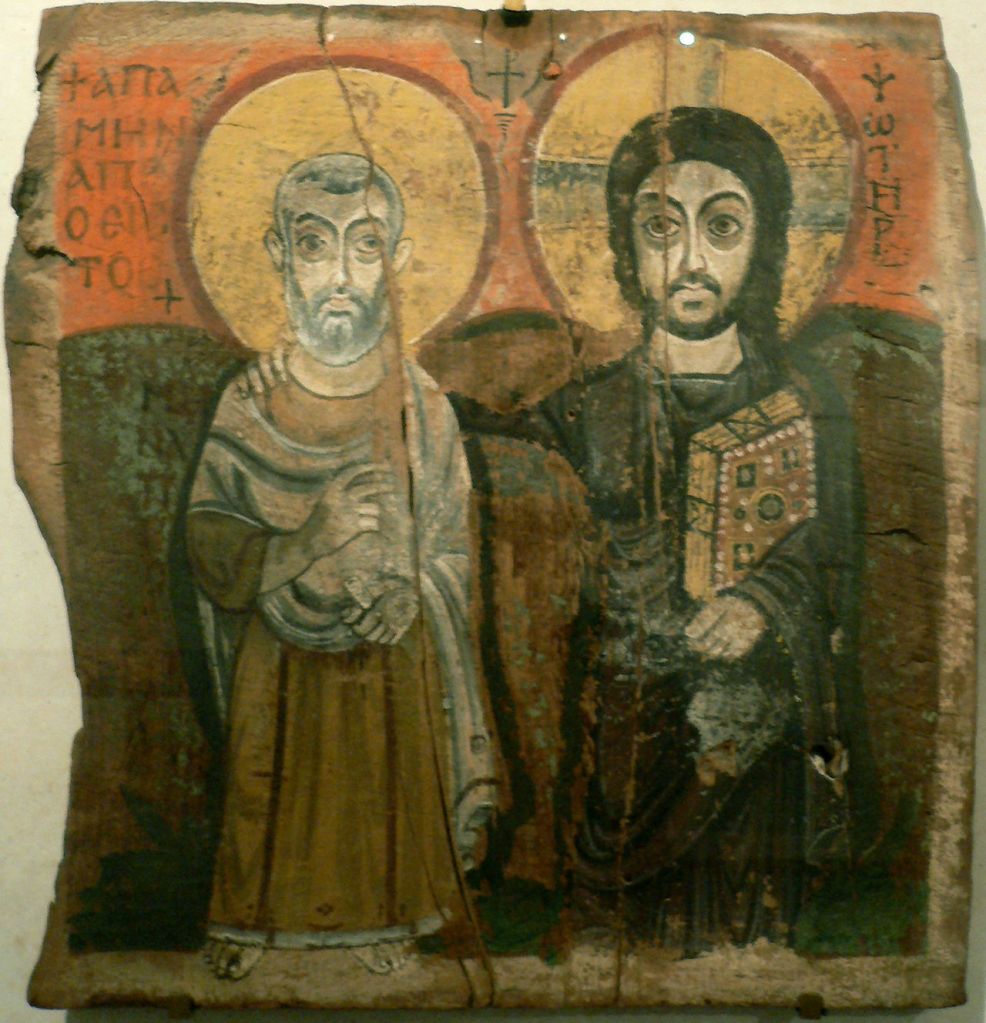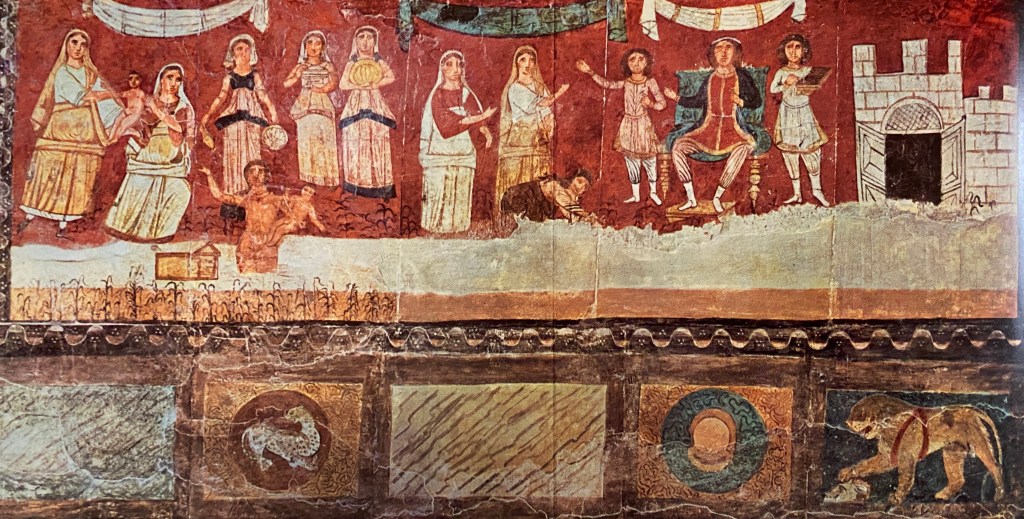The early Christians wished to decorate their catacombs with paintings, and these became our earliest form of Christian Iconography. They used symbolism, often taken from paganism, and Roman and Greek motifs- but the symbolism was given new meanings: Christian meanings.
Catacombs were underground passageways used for burial chambers during the Roman Empire. All Roman catacombs were located outside city walls since it was illegal to bury a dead body within the city, providing “a place…where the tombs of the martyrs could be openly marked, ” and commemorative services and feasts held safely on sacred days.

Memorial Portraits
Citizens of Roman Egypt memorialized their dead by using wax and pigments to paint on wood panels portraits of their dead. These were placed on mummies at the time of burial. The style of the painting was Greco-Roman but they reflected Egyptian religious beliefs. For the first six centuries, Icon painting followed that tradition.

The style of painting that they copied was similar to popular painting of the late Roman empire. Often Christian artists of the time used animals such as the fish, the lamb, the drinking stag, the peacock and the dove to convey Christian meanings.
Old Testament and the Gospel as Inspiration for Icons
The Old Testament appeared infrequently in the catacombs, but gradually with the spread of Holy Texts and the understanding that the Old Testament stories prefigured the Gospel, those Biblical themes began to inspire icon painters. Motifs such as the salvation of the soul, or Divine Mercy were depicted in scenes like Daniel in the lion’s den, the life of Moses, Jonah and the Whale, the sacrifice of Isaac, Noah’s ark, among others.


By the second century, knowledge of the Gospels was becoming more widespread, so images from the life of Christ began to emerge. Favorite images were the adoration of the Magi, the Baptism of Jesus, the Resurrection of Lazarus and the healing of the paralytic. The simple image of the Madonna and Child was seen as early as the 2nd Century.

Third century saw the Roman Empire under attack from the East, but it survived and moved its capital to Constantinople (modern Istanbul) in 330 AD. One Constantine legalized Christianity in 313, and made it the official imperial religion, Icons and religious imagery proliferated.

THE BYZANTINE EMPIRE
The Byzantine Empire, also referred to as the Eastern Roman Empire, or Byzantium, was the continuation of the Roman Empire in its eastern provinces during Late Antiquity and the Middle Ages. Its capital city was Constantinople. The Byzantine era flourished until it fell to the Ottoman Empire in 1453.
Although the Roman state continued and its traditions were maintained, modern historians distinguish Byzantium from ancient Rome insofar as it was centered on Constantinople and open to Eastern influences. Byzantium was also oriented towards the Greek rather than Latin culture.
It was during the Seventh Ecumenical Council, 787 AD, that the Church Fathers declared Icons to be called sacred objects and full of grace. According to St. John of Damascus, an icon is sanctified by the name of God, and by the name of the friends of God, that is, the saints, and that is why the icon receives the grace of the Divine Spirit.
This is an account of how Icons began in the early Centuries. The period following the sixth century saw turbulence and widespread destruction of Icons and that is why we have so few early Icons existing today.
I hope this article proves helpful and gives perspective that aids Iconographers today.
Until next month, be blessed , safe and healthy.
Christine Simoneau Hales

